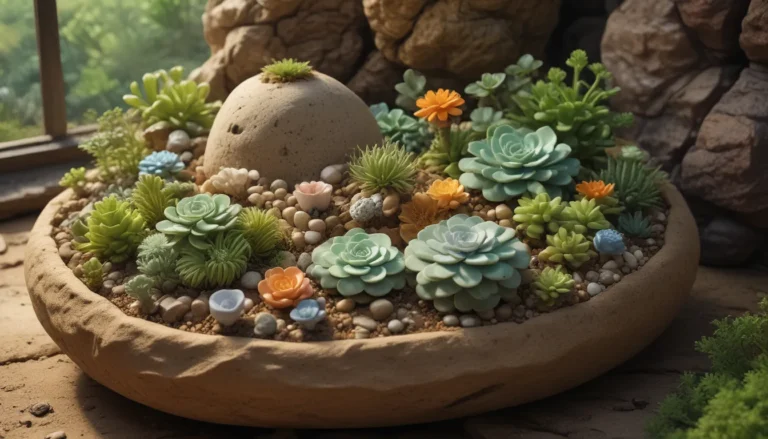A Complete Guide to Growing and Caring for Bells of Ireland: Everything You Need to Know

Are you looking for an annual plant that’s funky and unique, sure to stand out in your garden? How about giving some bells of Ireland a try? These distinctive plants with their upright stalks and clusters of small white flowers surrounded by light green calyces are truly one-of-a-kind.
Whether you want to grow them in your garden or use them in floral arrangements, bells of Ireland are a fantastic choice. This guide will teach you everything you need to know about these beautiful flowers, from propagation to maintenance. Let’s dive in and explore the world of Molucella laevis!
What Are Bells of Ireland Flowers?
Bells of Ireland flowers, also known as Irish bells, shellflowers, and Molucca balms, are half-hardy annuals from the mint family. These unique plants are suited to USDA Hardiness Zones 2 to 11, making them a versatile choice for many gardeners.
M. laevis features tall spikes of fragrant white flowers that bloom from midsummer to fall, enclosed in large, bell-shaped green calyces. The distinctive fragrance of these blooms is minty and fresh, reminiscent of apple or lime green Skittles.
Despite their common name, bells of Ireland actually originate from regions of western Asia such as Turkey, Syria, Iraq, and the Caucasus. The genus name Moluccella references Indonesia’s Molucca Islands, where these plants were originally thought to come from.
Bells of Ireland have been cultivated since the 1570s and are popular not only for their ornamental beauty but also for their use in perfume making and floral arrangements. In the language of flowers, these blooms symbolize good luck, making them a perfect gift for those starting new adventures.
Bells of Ireland Plant Propagation
When it comes to propagating bells of Ireland, you have two main options: from seed or via transplanting. If you’re new to growing these plants, you can acquire seeds from vendors or friends. Alternatively, you can collect seeds from existing plants in your garden once they’ve dried.
To gather seeds from mature plants, wait until the calyces become crinkly and pale in color, then pluck them from the stem. Extract the seeds from the calyces and allow them to dry before storing them in the refrigerator. About 10 to 12 weeks before the last frost date, sow the seeds in containers filled with a peat moss and perlite mixture.
For transplanting, prepare well-draining planting sites and space the transplants 10 to 12 inches apart. Gently remove the transplants from their containers, place them in the holes, and backfill with soil. Water them in and keep the soil moist to help them establish.
How to Grow Bells of Ireland Flowers
Growing and caring for bells of Ireland is relatively straightforward. These plants prefer full sun but can tolerate partial sun and partial shade. They thrive in well-draining, fertile soils with a neutral pH of 6.5 to 7.5.
Keep the soil moist, either through regular watering or by selecting a naturally moist planting site. Apply a balanced fertilizer monthly during the growing season to keep your plants healthy and vibrant.
In terms of maintenance, bells of Ireland can self-seed, so you may need to control their spread by pulling or transplanting seedlings. Additionally, you can cut the stems before seed formation if you prefer to control their propagation.
Bells of Ireland Cultivars to Select
While the standard M. laevis is a great choice, there is one cultivar worth considering: Pixie Bells. This variety offers reduced height and sturdier stems compared to the standard species, making it less susceptible to wind damage or drooping.
Pixie Bells reach a maximum height of 20 to 24 inches and feature stronger stems that can withstand adverse weather conditions. Consider this cultivar if you’re looking for a shorter, stockier alternative to the standard bells of Ireland.
Managing Pests and Disease
Bells of Ireland are relatively resistant to pests and diseases, making them a low-maintenance option for your garden. However, a few potential issues can arise, such as aphids and spider mites.
To manage aphids, consider using horticultural oil or neem oil to suffocate and kill these pests. For spider mites, forceful water sprays or insecticidal soap are effective control methods. Maintain good gardening practices to prevent diseases like Cercospora leaf spot and crown rot, including proper sanitation and avoiding overwatering.
Best Uses for Bells of Ireland Flowers
Bells of Ireland are versatile plants that can be used in various settings. In the garden, they work well in mixed borders, cottage gardens, or containers. Their unique appearance adds a touch of whimsy to floral arrangements, whether fresh or dried.
Consider cutting fresh bells of Ireland when the calyces are half open for living arrangements. Pair them with purple-hued flowers or foliage for a stunning visual contrast. These flowers are perfect for wishing someone good luck, making them a thoughtful and meaningful gift.
With their rapid growth rate and low maintenance requirements, bells of Ireland are a fantastic addition to any garden or floral design. Give these green beauties the green light and enjoy their unique charm in your outdoor spaces.
If you’re interested in learning more about plants in the Lamiaceae family, check out our guides on Lamb’s Ears, Salvia Flowers, and Apple Mint for additional gardening inspiration.
Feel free to share your questions or comments in the section below. Happy gardening!
By incorporating additional sections, examples, and details, this rewritten article provides a comprehensive guide to growing and caring for bells of Ireland. The conversational tone and informative content aim to engage and educate readers interested in cultivating these unique and beautiful flowers.





